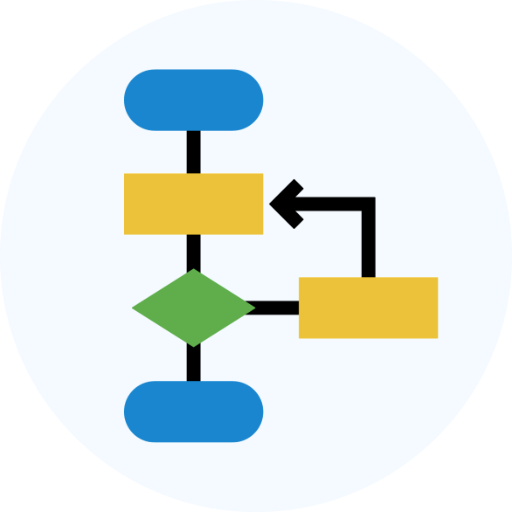Stat and Code Translator-code translation for statisticians
AI-powered code translation across languages
Translate this SAS code to Python
How would this R function look in Julia?
Convert this SQL query to STATA
Show me this Python script in SPSS syntax
Related Tools
Load MoreCode Comment Gen - saysay.ai
Add comment to given codes.
Code Teacher - SaySay.ai
Explain given codes.

Coding Cheatsheet
直接高效的编程帮手

Code Converter
Translates code between programming languages, focusing on accuracy and efficiency.

ONLY CODE
A GPT tailored for coders. Default Behavior: Only code. Use preprompts for different behavior.

Code Optimizer
Expert in JavaScript, React, Three.js, and coding best practices.
20.0 / 5 (200 votes)
Overview of Stat and Code Translator
Stat and Code Translator is designed to facilitate the conversion of code between statistical programming languages, such as STATA, SAS, R, SPSS, Julia, Python, and SQL. This tool is built to aid data scientists, researchers, and statisticians in transitioning between languages with ease by offering direct code translations that maintain the integrity of data processing and analysis tasks. It can handle statistical models, data manipulation, visualization, and more, making it invaluable for those working in multi-language environments. The service also provides contextual comments and explanations to help users understand the translations and adapt them for their specific purposes. For example, a researcher who has written data cleaning code in R might want to translate it into Python to integrate with a machine learning pipeline. Stat and Code Translator can efficiently convert the code while ensuring that all the data transformation steps are preserved.

Core Functions of Stat and Code Translator
Cross-Language Code Translation
Example
Converting a logistic regression model written in R into STATA or Python.
Scenario
A statistician has developed a logistic regression model in R but needs to implement the same model in STATA to comply with their organization’s analysis standards. Stat and Code Translator converts the model code, adapting the syntax and ensuring that the statistical outputs remain consistent across both languages.
Data Transformation Code Conversion
Example
Translating data cleaning and manipulation code from SAS to Python (Pandas).
Scenario
A data analyst using SAS to handle large datasets needs to switch to Python for more flexible data manipulation and machine learning integration. Stat and Code Translator converts SAS code for filtering, merging, and reshaping data into Python's Pandas framework, allowing seamless transition of the cleaning steps.
Statistical Function Translation
Example
Translating SPSS syntax for ANOVA tests into R code.
Scenario
A psychology researcher uses SPSS to conduct ANOVA tests on experimental data but wants to switch to R for more customizable visualizations. Stat and Code Translator can translate SPSS’s ANOVA procedures into R’s `aov()` function, preserving the researcher’s workflow but enabling more advanced plotting.
Target Users of Stat and Code Translator
Data Scientists and Statisticians
Data scientists and statisticians often work with multiple programming languages, depending on the context of their projects. They may need to collaborate with teams using different tools, or they may prefer specific software environments for different stages of analysis. Stat and Code Translator helps them bridge these language differences, allowing for the smooth integration of code and data across platforms like R, Python, SAS, and STATA.
Researchers in Academic and Applied Fields
Researchers, especially in fields like social sciences, economics, and health sciences, often need to use specific statistical software that aligns with the requirements of their institutions or journals. However, they may need to switch tools for flexibility or integration with other workflows. Stat and Code Translator assists them by converting their analysis code between languages like SPSS, STATA, and R, helping them to maintain consistency in their results while complying with external standards.

Guidelines for Using Stat and Code Translator
Visit aichatonline.org for a free trial without login
Begin by visiting aichatonline.org. No login is required, and there's no need for a ChatGPT Plus subscription to access the Stat and Code Translator.
Choose the programming languages
Identify the source and target languages for your code translation (e.g., STATA to Python, R to SAS). The tool supports various statistical and programming languages.
Input the code or query
Paste the code you need to translate into the input box. You can also include any specific instructions, such as explaining certain functions or adapting for particular use cases.
Review the translated code
Once the tool provides the translation, carefully review the output. Make sure to understand any contextual notes added to facilitate integration.
Apply the code and test
Use the translated code in your projects. Ensure that the code is correctly implemented and functions as expected within your environment.
Try other advanced and practical GPTs
Process Map Optimizer
AI-powered process map analysis and optimization.

Stats Master
AI-powered NBA stats and insights

EtsyWizard
AI-Powered Etsy SEO Assistant

SchemaBot AI
AI-powered JSON-LD and SEO optimization.

中医专家
AI-Powered Traditional Chinese Medicine Advisor

100 ways to make you happy
AI-powered tool for happier solutions.

TOGAF Navigator
AI-powered TOGAF framework guidance tool.

K12 教育产品设计向导
AI-powered tool for educational product design

Text-to-Table Bot
AI-powered text-to-table conversion tool

Dungeon and Dragons Adventure
AI-powered storytelling for D&D adventures.

Cartoon animation short film producer
AI-powered cartoon storyboard generation.

AI Logo Generator
Create stunning logos with AI.

- Academic Research
- Data Science
- Statistical Analysis
- Automation Scripts
- Code Migration
Frequently Asked Questions About Stat and Code Translator
What programming languages does the Stat and Code Translator support?
Stat and Code Translator supports a wide range of languages, including R, Python, STATA, SAS, SPSS, SQL, and Julia. These languages cover both statistical programming and general-purpose data analysis.
Can I use Stat and Code Translator without logging in?
Yes, you can use the tool without logging in. Just visit the website for a free trial and input your code directly into the tool, no need for a subscription or login.
How accurate are the translations between languages?
The translations are highly accurate, as the tool takes into account both the syntax and the contextual meaning of the code. Additionally, the tool provides comments for clarity, especially when translating between languages with different data structures or paradigms.
Is it possible to get code explanations along with translations?
Yes, Stat and Code Translator offers detailed contextual comments. This is particularly helpful when translating complex statistical functions or adapting code to different frameworks.
What are some common use cases for the tool?
Common use cases include translating academic research code from STATA to R, converting SAS code into Python for data analysis projects, and moving SQL queries to Python scripts for automation. It's ideal for data scientists, statisticians, and researchers.